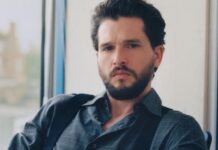The webinar “Disability and the Media” was part of the weeklong celebrations leading up to July 26 — the 30th anniversary of the Americans with Disabilities Act. The July 22 panel event, organized by Disability Rights Center New Hampshire and the Institute on Disability at University of New Hampshire, was moderated by documentary filmmaker Dan Habib. Panelists included prominent writers and speakers in the disability advocacy space: Imani Barbarin, Emily Ladau and Andrew Pulrang.
Pulrang began by referencing the Ford Foundation whitepaper, “Road Map for Inclusion: Changing the Face of Disability in Media,” by renowned civil rights activist and UC Berkeley alumna, Judith Heumann. She had stressed the need for authentic representation in the media that shows the everyday realities of disabled life to counteract themes such as disability being invisible or a burden.
The panel discussion then moved to a critique of the show “America’s Got Talent,” and the way the judges and audience had discussed the performance of last year’s winner, Kodi Lee, who is blind and autistic. Barbarin felt that only Simon Cowell had zeroed in on how Lee’s talent was developing, while the “overexuberant praise” by others, though not undeserved, felt false when it came to disability. Pulrang argued that the basic premise of the show was talent plus the hook of an inspiring story, but still admitted that “the gush of it felt kind of gross.” According to the panelists, the judges’ conversation was always directed at his attendant mother and never at Lee, highlighting the infantilization of disabled people.
Ladau stressed that audiences need to “reframe (our) thinking about inspiration,” and objected to events such as these becoming mass “inspiration porn,” a term that was coined by Stella Young in 2012 to explain how ordinary activities are considered extraordinary due to one’s disability. “We are up against a society that thinks us incapable and when we do (succeed), we become a source of inspiration porn,” Ladau explained. “Instead of saying, ‘Wow, it’s so amazing that you overcame this disability,’ (people should) say, ‘Hey … you’re awesome, you’re talented!’ ”
Such inspiration porn in the media is a problem, according to Barbarin, as it often shows nondisabled people as “saviors of disabled people,” as with the viral video of a fast food worker who took the time to help out a disabled customer. According to Barbarin, “patting a disabled person on the back, saying, ‘You got this, you did great,’ negates the systemic issues behind the lack of inclusion” and dearth of other support services.
Pulrang then pointed to examples of more balanced representation, such as MasterChef winner Christine Hà, who is also blind. Pulrang explained that the show was set up so viewers got to see her talent as a chef without too much sentimentality. Similarly, on the fiction end, disability was presented in a very complex and nuanced manner by Peter Dinklage in “Game of Thrones.”
The panelists spoke out strongly against the narrative of disability as worse than death, as shown by the novel and film, “Me Before You.” “As a New York Times bestseller,” Ladau said, “it becomes a public narrative that makes everything think that it is the correct choice, that disability is worse than death.”
Barbarin also stressed that such narratives have real-life consequences; when the COVID-19 pandemic started, it highlighted the realities of health care rationing discrimination against people with disabilities.
Another common and problematic public narrative in the media is that of the “supercrip,” a person seen to overcome disability in an inspiring way. “It sets disabled people up to fail,” Barbarin said, as disabled people are then held up to these unrealistic standards.
With the example of the movie “Come As You Are” came the observations of the seemingly endless, recurring theme of mostly white disabled men trying to have sex. “When it comes to disability representation, there’s kind of like this obsessive need to know that even if white men were disabled, they’re still hot and attractive,” Barbarin said.
Pulrang suggested that media executives may feel that “there’s only so many marginalizations (they) can provide at one time” — the most common combination being white, heterosexual, male and disabled, despite statistics that show a majority of the disabled are Black or Brown. All too often, many of these disabled characters are played by nondisabled actors.
“Black-led films view disability as another marginalization that people can discriminate against,” so Black filmmakers may be reluctant to cover Black disability, Barbarin said. “Even in the Black Lives Matter movement, Black disabled people are often missing from the conversation.”
Finally, an important issue that was touched upon was the disability hierarchy, a kind of ableism within the disability community. Ladau acknowledged that this hierarchy perpetuates a “narrative that disability is purely a physical thing,” and results in cognitive disabilities being pushed to the bottom in terms of meaningful complex representation. She stated that she is now consciously trying to uplift and support such storytelling.
“I believe that now is the time to shift attitudes, and I think the disability community is claiming the power to do that,” Ladau said.
July 26, 2020 marked the 30th anniversary of the Americans with Disabilities Act.
Contact Hari Srinivasan at [email protected].




















![[Book Review] The Blade Itself (The First Law Trilogy) by Joe Abercrombie](https://bendthekneegot.com/wp-content/uploads/2018/01/1516047103_maxresdefault-218x150.jpg)
















